#Solar And Wind Energy
Explore tagged Tumblr posts
Text
From Solar to Wind: The Most Promising Renewable Energy Technologies
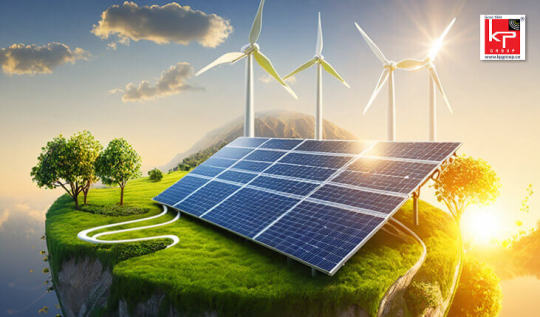
The world is currently undergoing a significant transformation in the way we generate and consume energy. As the global climate crisis intensifies and the need for sustainable solutions becomes more pressing, renewable energy technologies have emerged as a beacon of hope for a cleaner, greener future. From solar to wind, renewable energy technologies are changing the way we power our homes, industries, and cities. In this article, we will explore the most promising renewable energy technologies, focusing on solar and wind energy, as well as the potential of renewable energy sources across the globe, with a particular emphasis on renewable energy in India.
What is Renewable Energy?
Before diving into specific technologies, let’s first understand what renewable energy is. Renewable energy refers to energy derived from resources that are replenished naturally and are not depleted when used. Unlike fossil fuels, which take millions of years to form and emit harmful pollutants, renewable energy sources are sustainable and environmentally friendly. These energy sources include solar, wind, hydro, geothermal, and biomass energy.
On the other hand, nonrenewable energy comes from sources that cannot be replenished in a short time, such as coal, oil, and natural gas. These sources are finite and contribute to environmental degradation, including air pollution and climate change. Understanding the difference between renewable and nonrenewable energy is crucial in the push for cleaner energy solutions.
Types of Renewable Energy
Renewable energy comes in various forms, each with unique advantages and challenges. The main types of renewable energy include:
Solar Energy: Solar power harnesses energy from the sun using photovoltaic cells or solar thermal systems. It is one of the most abundant and widely used renewable energy technologies globally.
Wind Energy: Wind power uses turbines to convert the kinetic energy of wind into electricity. Wind farms are increasingly being built offshore and onshore to tap into wind energy potential.
Hydropower: Hydroelectric power plants use water flow to generate electricity. While hydropower is a proven technology, it can have significant environmental and ecological impacts.
Geothermal Energy: This type of energy taps into the Earth’s internal heat to generate electricity or provide direct heating. Geothermal energy is sustainable and can be a reliable source of power.
Biomass: Biomass energy comes from organic materials such as wood, agricultural waste, and algae. These materials can be burned or converted into biofuels to produce energy.
The Promise of Solar Energy
Among the various renewable energy technologies, solar energy has seen exponential growth over the past decade. Solar power involves converting sunlight into electricity through photovoltaic panels. These panels can be installed on rooftops, large solar farms, or even integrated into building materials, making it a versatile and scalable technology.
The technology behind solar panels has improved significantly, leading to a decrease in the cost of solar energy production. Additionally, solar energy is abundant and widely available, making it a key player in the transition to renewable energy. In countries like India, solar power is becoming increasingly important due to the country’s large landmass and high levels of sunlight.
Solar energy in India has seen massive growth in recent years, with the Indian government setting ambitious targets for solar power generation. India has vast untapped solar potential, particularly in regions with high solar radiation. The country has established itself as one of the leaders in solar energy adoption, with both residential and commercial sectors embracing solar installations.
The transition to solar energy also brings with it numerous environmental benefits. Solar power is a clean and renewable energy source, meaning it does not emit harmful greenhouse gases. As countries and industries shift towards solar energy, we can expect a reduction in pollution and a move towards more sustainable energy practices.
The Rise of Wind Energy
Another promising renewable energy technology is wind energy. Wind power involves using turbines to harness the kinetic energy of the wind and convert it into electricity. Wind turbines can be installed both onshore and offshore, with offshore wind farms often being more efficient due to stronger and more consistent winds.
Wind energy has been growing rapidly in recent years, and countries across the globe are investing heavily in wind energy infrastructure. As wind turbines become more efficient and cost-effective, the potential for wind power as a significant energy source continues to expand.
One of the most notable benefits of wind energy is its scalability. Wind farms can be built in a variety of locations, from coastal regions to open fields, and their power output can be increased by adding more turbines. Offshore wind farms are also being developed in countries with large coastlines, providing a new frontier for wind energy generation.
In renewable energy in India, wind energy plays a vital role in the country’s energy mix. India has a vast coastline and areas with high wind potential, making it an ideal location for wind farms. The government’s commitment to increasing wind energy capacity has led to significant investments in the sector, making India one of the largest producers of wind energy globally.
The Future of Renewable Energy Technologies
The future of renewable energy technologies looks incredibly promising, with both solar and wind energy leading the charge. However, these technologies are not without challenges. Energy storage, grid integration, and the need for infrastructure improvements are ongoing issues that need to be addressed to fully harness the potential of solar and wind energy.
As technology continues to improve, the cost of renewable energy production is expected to decrease, making these sources of energy more accessible to developing countries. The ongoing research into energy storage systems, such as batteries, will also play a crucial role in addressing the intermittency of solar and wind power.
Moreover, the combined use of different renewable energy sources, known as a hybrid system, is expected to become more common. Solar and wind energy, when used together, can complement each other. For example, when the sun isn’t shining, wind energy can help meet energy demand, and vice versa.
Conclusion
Renewable energy technologies, including solar and wind energy, represent a key solution to the global energy crisis. By harnessing the power of renewable energy sources, we can reduce our dependence on fossil fuels, decrease carbon emissions, and move towards a more sustainable future. Countries like India are leading the way in renewable energy adoption, and the potential for solar and wind energy is immense.
At KP Group, we are dedicated to embracing innovative renewable energy technologies and providing sustainable solutions to our clients. As we continue to explore and invest in renewable energy sources, we aim to contribute to a cleaner, greener future for generations to come.
0 notes
Text

🌱 Powering the Future with Renewable Energy 🌍 Dive into a critical evaluation of photovoltaics and wind turbines in modern engineering. Let’s explore how these sustainable solutions are transforming the world and paving the way for a greener tomorrow💡✨
#Solar and wind energy#Renewable energy advancements#Photovoltaic efficiency#Wind turbine optimization#Clean energy technologies#Solar energy systems#Wind farm design#Renewable power systems
0 notes
Text
Rooftop & Solar Panel Installation Company | Zenith Energy
We are best rooftop and panel solar installation Company in India Hyderabad. Get an estimate today and reduce your energy cost
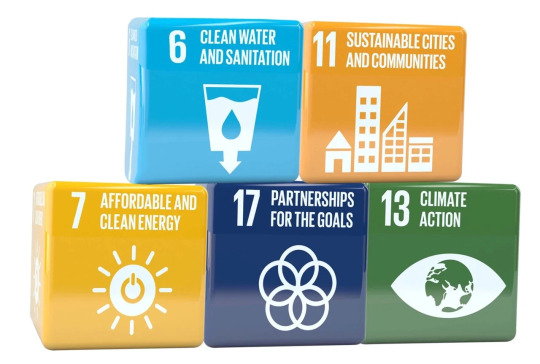
Zenith Energy is a leading rooftop and solar panel installation company based in Hyderabad, India, offering top-tier solutions to reduce energy costs. With expertise in solar energy, we provide efficient and affordable solar installations tailored to your needs. Whether you're looking to lower electricity bills or embrace sustainable energy, Zenith Energy offers reliable services that help transform your energy usage. Get in touch today for an estimate and take the first step toward greener, more cost-effective energy solutions. Learn more at Zenith Energy
Read more: https://zenithenergy.com/solar-energy/
#solar energy in india#bright energy solar#solar and wind energy#solar energy service#energy solutions solar#sustainable solar#solar energy initiatives#green power energy solar#solar energy investments#renewable energy solar company#solar energy sustainable development#green power solar energy#net solar#rooftop and solar panel installation company
0 notes
Text
Green Hydrogen with Solar and Wind Farms
Hydrogen, produced using renewable energy sources, is a crucial component in the transition to clean energy infrastructure and a sustainable reality.
Project Details
This project explores the implementation of the Scalable Hydrogen Energy Platform (SHEP) and the Compact Hydrogen Refueling Station (CHRS) powered by solar and/or wind energy. The developer aims to take advantage of renewable energy generated at low costs to produce, store, and dispense fuel cell grade green hydrogen.
The proposed facility is located in a region with abundant sun and/or wind, ensuring high renewable energy generation.
While our scalable hydrogen production platform is a fraction of the size of traditional hydrogen facilities, additional acreage is needed to support 1.5MW of solar and wind energy.
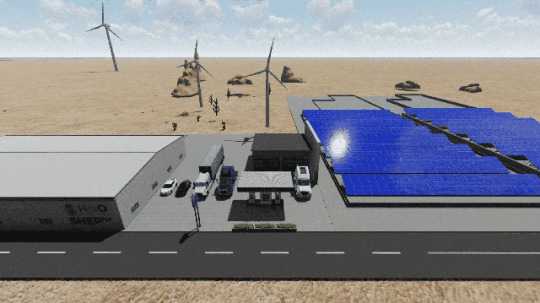
#HNO International#Green Hydrogen Production#Solar And Wind Energy#Renewable Energy Sources#Clean Energy Infrastructure
1 note
·
View note
Text
World surpasses 40% clean power as renewables see record rise

This is from the Global Electricity Review 2025 by Ember. Although this isn't something you are going to see in newspaper headlines, the progress we made with renewables in 2024 is a pretty big deal and if you're someone who likes a lot of data and graphs it's really worth reading.
I'm going to leave this video here because Hank Green does a better job of covering it than I am going to.
youtube
"This to me feels like news. It feels like a big deal. It feels like things are changing, like we are hitting a moment with electricity generation that really does matter. And over the next five years we will hit the point where we are generating less and less energy with fossil fuels every year. That's great. And that's not news. I didn't see anyone covering this [...]. It's not news because it's not bad and it's also not news because it's not like 'we did it, we hit the moment!'."
I think this quote from Hank's video does a good job of encapsulating how the slow, gradual progress that is happening often doesn't make it into the news--because it's not a dramatic emergency or a "we did it, we fully solved climate change!" kind of moment that makes for good headlines.
But that then gives people the idea that we're hardly making any progress on addressing climate change, which is not true at all. The fact that we need to continue to double-down on this progress to do it more and faster does not negate that so much progress has already been made.
#climate change#global warming#carbon emissions#data#graphs#science#ecoanxiety#ecogrief#climate anxiety#hope#good news#renewable energy#solar energy#wind energy#nuclear energy#hydroelectricity#video#clean energy#green energy#Youtube
3K notes
·
View notes
Text
"The man who has called climate change a “hoax” also can be expected to wreak havoc on federal agencies central to understanding, and combating, climate change. But plenty of climate action would be very difficult for a second Trump administration to unravel, and the 47th president won’t be able to stop the inevitable economy-wide shift from fossil fuels to renewables.
“This is bad for the climate, full stop,” said Gernot Wagner, a climate economist at the Columbia Business School. “That said, this will be yet another wall that never gets built. Fundamental market forces are at play.”
A core irony of climate change is that markets incentivized the wide-scale burning of fossil fuels beginning in the Industrial Revolution, creating the mess humanity is mired in, and now those markets are driving a renewables revolution that will help fix it. Coal, oil, and gas are commodities whose prices fluctuate. As natural resources that humans pull from the ground, there’s really no improving on them — engineers can’t engineer new versions of coal.
By contrast, solar panels, wind turbines, and appliances like induction stoves only get better — more efficient and cheaper — with time. Energy experts believe solar power, the price of which fell 90 percent between 2010 and 2020, will continue to proliferate across the landscape. (Last year, the United States added three times as much solar capacity as natural gas.) Heat pumps now outsell gas furnaces in the U.S., due in part to government incentives. Last year, Maine announced it had reached its goal of installing 100,000 heat pumps two years ahead of schedule, in part thanks to state rebates. So if the Trump administration cut off the funding for heat pumps that the IRA provides, states could pick up the slack.

Local utilities are also finding novel ways to use heat pumps. Over in Massachusetts, for example, the utility Eversource Energy is experimenting with “networked geothermal,” in which the homes within a given neighborhood tap into water pumped from underground. Heat pumps use that water to heat or cool a space, which is vastly more efficient than burning natural gas. Eversource and two dozen other utilities, representing about half of the country’s natural gas customers, have formed a coalition to deploy more networked geothermal systems.
Beyond being more efficient, green tech is simply cheaper to adopt. Consider Texas, which long ago divorced its electrical grid from the national grid so it could skirt federal regulation. The Lone Star State is the nation’s biggest oil and gas producer, but it gets 40 percent of its total energy from carbon-free sources. “Texas has the most solar and wind of any state, not because Republicans in Texas love renewables, but because it’s the cheapest form of electricity there,” said Zeke Hausfather, a research scientist at Berkeley Earth, a climate research nonprofit. The next top three states for producing wind power — Iowa, Oklahoma, and Kansas — are red, too.
State regulators are also pressuring utilities to slash emissions, further driving the adoption of wind and solar power. As part of California’s goal of decarbonizing its power by 2045, the state increased battery storage by 757 percent between 2019 and 2023. Even electric cars and electric school buses can provide backup power for the grid. That allows utilities to load up on bountiful solar energy during the day, then drain those batteries at night — essential for weaning off fossil fuel power plants. Trump could slap tariffs on imported solar panels and thereby increase their price, but that would likely boost domestic manufacturing of those panels, helping the fledgling photovoltaic manufacturing industry in red states like Georgia and Texas.
The irony of Biden’s signature climate bill is states that overwhelmingly support Trump are some of the largest recipients of its funding. That means tampering with the IRA could land a Trump administration in political peril even with Republican control of the Senate, if not Congress. In addition to providing incentives to households (last year alone, 3.4 million American families claimed more than $8 billion in tax credits for home energy improvements), the legislation has so far resulted in $150 billion of new investment in the green economy since it was passed in 2022, boosting the manufacturing of technologies like batteries and solar panels. According to Atlas Public Policy, a research group, that could eventually create 160,000 jobs. “Something like 66 percent of all of the spending in the IRA has gone to red states,” Hausfather said. “There certainly is a contingency in the Republican party now that’s going to support keeping some of those subsidies around.”
Before Biden’s climate legislation passed, much more progress was happening at a state and local level. New York, for instance, set a goal to reduce its greenhouse gas emissions from 1990 levels by 40 percent by 2030, and 85 percent by 2050. Colorado, too, is aiming to slash emissions by at least 90 percent by 2050. The automaker Stellantis has signed an agreement with the state of California promising to meet the state’s zero-emissions vehicle mandate even if a judicial or federal action overturns it. It then sells those same cars in other states.
“State governments are going to be the clearest counterbalance to the direction that Donald Trump will take the country on environmental policy,” said Thad Kousser, co-director of the Yankelovich Center for Social Science Research at the University of California, San Diego. “California and the states that ally with it are going to try to adhere to tighter standards if the Trump administration lowers national standards.”
[Note: One of the obscure but great things about how emissions regulations/markets work in the US is that automakers generally all follow California's emissions standards, and those standards are substantially higher than federal standards. Source]
Last week, 62 percent of Washington state voters soundly rejected a ballot initiative seeking to repeal a landmark law that raised funds to fight climate change. “Donald Trump’s going to learn something that our opponents in our initiative battle learned: Once people have a benefit, you can’t take it away,” Washington Governor Jay Inslee said in a press call Friday. “He is going to lose in his efforts to repeal the Inflation Reduction Act, because governors, mayors of both parties, are going to say, ‘This belongs to me, and you’re not going to get your grubby hands on it.’”
Even without federal funding, states regularly embark on their own large-scale projects to adapt to climate change. California voters, for instance, just overwhelmingly approved a $10 billion bond to fund water, climate, and wildfire prevention projects. “That will be an example,” said Saharnaz Mirzazad, executive director of the U.S. branch of ICLEI-Local Governments for Sustainability. “You can use that on a state level or local level to have [more of] these types of bonds. You can help build some infrastructure that is more resilient.”
Urban areas, too, have been major drivers of climate action: In 2021, 130 U.S. cities signed a U.N.-backed pledge to accelerate their decarbonization. “Having an unsupportive federal government, to say the least, will be not helpful,” said David Miller, managing director at the Centre for Urban Climate Policy and Economy at C40, a global network of mayors fighting climate change. “It doesn’t mean at all that climate action will stop. It won’t, and we’ve already seen that twice in recent U.S. history, when Republican administrations pulled out of international agreements. Cities step to the fore.”
And not in isolation, because mayors talk: Cities share information about how to write legislation, such as laws that reduce carbon emissions in buildings and ensure that new developments are connected to public transportation. They transform their food systems to grow more crops locally, providing jobs and reducing emissions associated with shipping produce from afar. “If anything,” Miller said, “having to push against an administration, like that we imagine is coming, will redouble the efforts to push at the local level.”
Federal funding — like how the U.S. Forest Service has been handing out $1.5 billion for planting trees in urban areas, made possible by the IRA — might dry up for many local projects, but city governments, community groups, and philanthropies will still be there. “You picture a web, and we’re taking scissors or a machete or something, and chopping one part of that web out,” said Elizabeth Sawin, the director of the Multisolving Institute, a Washington, D.C.-based nonprofit that promotes climate solutions. “There’s this resilience of having all these layers of partners.”
All told, climate progress has been unfolding on so many fronts for so many years — often without enough support from the federal government — that it will persist regardless of who occupies the White House. “This too shall pass, and hopefully we will be in a more favorable policy environment in four years,” Hausfather said. “In the meantime, we’ll have to keep trying to make clean energy cheap and hope that it wins on its merits.”"
-via Grist, November 11, 2024. A timely reminder.
#climate change#climate action#climate anxiety#climate hope#united states#us politics#donald trump#fuck trump#inflation reduction act#clean energy#solar power#wind power#renewables#good news#hope
2K notes
·
View notes
Text
An end to the climate emergency is in our grasp
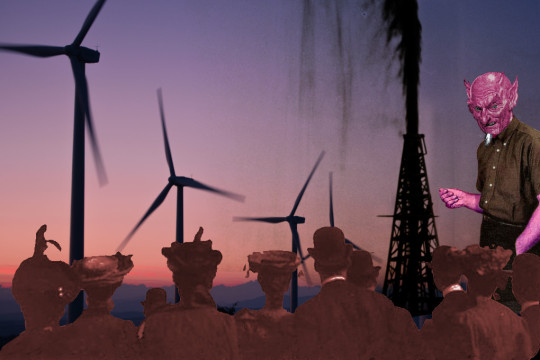
On June 20, I'm keynoting the LOCUS AWARDS in OAKLAND.

The problem with good news in the real world is that it's messy. Neat happy endings are for novels, not the real world, and that goes double for the climate emergency. But even though good climate news is complicated and nuanced, that doesn't mean it shouldn't buoy our spirits and fill our hearts with hope.
The big climate news this past week is the National Oceanic and Atmospheric Administration's clarion call about surging CO2 levels – the highest ever – amid a year that is on track to have the largest and most extreme series of weather events in human history:
https://www.noaa.gov/news-release/during-year-of-extremes-carbon-dioxide-levels-surge-faster-than-ever
This is genuinely alarming and you – like me – have probably experienced it as a kind of increase in your background radiation of climate anxiety. Perhaps you – like me – even experienced some acute, sit-bolt-upright-in-bed-at-2AM anxiety as a result. That's totally justifiable. This is very real, very bad news.
And yet…
The news isn't all bad, and even this terrible dispatch from the NOAA is best understood in context, which Bill McKibben provides in his latest newsletter post, "What You Want is an S Curve":
https://billmckibben.substack.com/p/what-you-want-is-an-s-curve
Financier and their critics should all be familiar with Stein's Law: "anything that can't go on forever will eventually stop." This is true outside of finance as well. One of the reasons that we're seeing such autophagic panic from the tech companies is that their period of explosive growth is at an end.
For years, they told themselves that they were experiencing double-digit annual growth because they were "creating value" and "innovating" but the majority of their growth was just a side-effect of the growth of the internet itself. When hundreds of millions of people get online every year, the dominant online services will, on average, gain hundreds of millions of new users.
But when you run out of people who don't have internet access, your growth is going to slow. How can it not? Indeed, at that point, the only ways to grow are to either poach users from your rivals (through the very expensive tactics of massive advertising and sales-support investments, on top of discounts and freebies as switching enticements), or to squeeze your own users for more.
That's why the number of laptops sold in America slowed down. It's why the number of cellphones sold in America slowed down. It's why the number of "smart home" gizmos slowed down.
Even the steepest hockey-stick-shaped exponential growth curve eventually levels off and becomes an S-curve, because anything that can't go on forever will eventually stop.
One way or another, the world's carbon emissions will eventually level off. Even if we drive ourselves to (or over) the brink of extinction and set up the conditions for wildfires that release all the carbon stored in all the Earth's plants, the amount of carbon we pump into the atmosphere has to level off.
Rendering the Earth incapable of sustaining human civilization (or life) is the ultimate carbon reduction method – but it's not my first choice.
That's where McKibben's latest newsletter comes in. He cites a new report from the Rocky Mountain Institute, which shows a major reversal in our energy sources, a shift that will see our energy primarily provided by renewables, with minimal dependence on fossil fuels:
https://rmi.org/insight/the-cleantech-revolution/
The RMI team says that in this year or next, we'll have hit peak demand for fossil fuels (a fact that is consistent with NOAA's finding that we're emitting more CO2 than ever). The reason for this is that so much renewable energy is about to come online, and it is so goddamned cheap, that we are about to undergo a huge shift in our energy consumption patterns.
This past decade saw a 12-fold increase in solar capacity, a 180-fold increase in battery storage, and a 100-fold increase in EV sales. China is leading the world in a cleantech transition, with the EU in close second. Cleantech is surging in places where energy demand is also still growing, like India and Vietnam. Fossil fuel use has already peaked in Thailand, South Africa and every country in Latin America.
We're on the verge of solar constituting an absolute majority of all the world's energy generation. This year, batteries will overtake pumped hydro for energy storage. Every cleantech metric is growing the way that fossil fuels did in previous centuries: investment, patents, energy density, wind turbine rotor size. The price of solar is on track to halve (again) in the next decade.
In short, cleantech growth looks like the growth of other technologies that were once rarities and then became ubiquitous overnight: TV, cellphones, etc. That growth isn't merely being driven by the urgency of the climate emergency: it's primarily a factor of how fucking great cleantech is:
https://rmi.org/wp-content/uploads/2024/05/the_incredible_inefficiency_of_fossils.pdf
Fossil fuels suck. It's not just that they wreck the planet, or that their extraction is both politically and environmentally disastrous. They just aren't a good way to make energy. About a third of fossil fuel energy is wasted in production and transportation. A third! Another third is wasted turning fossil fuels into energy. Two thirds! The net energy efficiency of fossil fuels is about 37%.
Compare that with cleantech. EVs convert electricity to movement with 80-90% efficiency. Heat pumps are 300% efficient (the main fuel for your heat pump is the heat in the atmosphere, not the electricity it draws).
Cleantech is just getting started – it's still in the hockey-stick phase. That means those efficiency numbers are only going up. Rivian just figured out how to remove 1.6 miles of copper wire from each vehicle. That's just one rev – there's doubtless lots of room for more redesigns that will further dematerialize EVs:
https://insideevs.com/news/722265/rivian-r1s-r1t-wiring/
As McKibben points out, there's been a lot of justifiable concern that electrification will eventually use up all our available copper, but copper demand has remained flat even as electrification has soared – and this is why. We keep figuring out new ways to electrify with fewer materials:
https://www.chemanalyst.com/NewsAndDeals/NewsDetails/copper-wire-price-remains-stable-amidst-surplus-supply-and-expanding-mining-25416#:~:text=Global%20Copper%20wire%20Price%20Remains%20Stable%20Amidst%20Surplus%20Supply%20and%20Expanding%20Mining%20Activities
This is exactly what happened with previous iterations of tech. The material, energy and labor budgets of cars, buildings, furniture, etc all fell precipitously every time there was a new technique for manufacturing them. Renewables are at the start of that process. There's going to be a lot of this dematerialization in cleantech. Calculating the bill of materials for a planetary energy transition isn't a matter of multiplying the materials in current tech by the amount of new systems we'll need – as we create those new systems, we will constantly whittle down their materials.
What's more, global instability drives cleantech uptake. The Russian invasion of Ukraine caused a surge in European renewables. The story that energy prices are rising due to renewables (or carbon taxes) is a total lie. Fossil fuels are getting much more expensive, thanks to both war and rampant, illegal price-fixing:
https://www.thebignewsletter.com/p/an-oil-price-fixing-conspiracy-caused
If not for renewables, the incredible energy shocks of the recent years would be far more severe.
The renewables story is very good and it should bring you some comfort. But as McKibben points out, it's still not enough – yet. The examples of rapid tech uptake had big business on their side. America's living rooms filled with TV because America's largest businesses pulled out all the stops to convince everyone to buy a TV. By contrast, today's largest businesses – banks, oil companies and car companies – are working around the clock to stop cleantech adoption.
We're on track to double our use of renewables before the decade is over. But to hold to the (already recklessly high) targets from the Paris Accord, we need to triple our renewables usage. As McKibben says, the difference between doubling and tripling our renewables by 2030 is the difference between "survivable trouble" and something much scarier.
The US is experiencing a welcome surge in utility scale solar, but residential solar is stalling out as governments withdraw subsidies or even begin policies that actively restrict rooftop solar:
https://twitter.com/curious_founder/status/1798049929082097842?s=51
McKibben says the difference between where we are now and bringing back the push for home solar generation is the difference between "fast" and "faster" – that is the difference between tripling renewables by 2030 (survivable) and doubling (eek).
Capitalism stans who argue that we can survive the climate emergency with market tools will point to the good news on renewable and say that the market is the only way to transition to renewables. It's true that market forces are partly responsible for this fast transition. But the market is also the barrier to a faster (and thus survivable) transition. The oil companies, the banks who are so invested in fossil fuels, the petrostates who distort the world's politics – they're why we're not much farther along.
The climate emergency was never going to be neatly solved. We weren't going to get a neat novelistic climax that saw our problems sorted out in a single fell swoop. We're going to be fighting all the way to net zero, and after that, we'll still have decades of climate debt to pay down: fires, floods, habitat loss, zoonotic plagues, refugee crises.
But we should take our wins. Even if we're far from where we need to be on renewables, we're much farther along on renewables than we had any business hoping for, just a few years ago. The momentum is on our side. It's up to us to use that momentum and grow it. We're riding the hockey-stick, they're on that long, flat, static top of the S-curve. Their curve is leveling off and will start falling, ours will grow like crazy for the rest of our lives.

If you'd like an essay-formatted version of this post to read or share, here's a link to it on pluralistic.net, my surveillance-free, ad-free, tracker-free blog:
https://pluralistic.net/2024/06/12/s-curve/#anything-that-cant-go-on-forever-eventually-stops
#pluralistic#s-curves#bill mckibben#climate emergency#renewables#energy transition#energy#solar#wind#fossil fuels#climate
906 notes
·
View notes
Text
Republican Bill in Congress Threatens 300 US Factories, 300,000 American Jobs
Last Updated on: 20th May 2025, 01:19 am
It’s been such a big part of the US Republican Party for so long that it’s hard to keep in mind how insane opposition to clean energy is. Solar and wind energy power millions of homes, and they provide hundreds of thousands of US jobs, and they don’t cause cancer, asthma, dementia, and a large variety of other health problems that coal and natural gas power plants cause. There’s real no good reason to oppose solar and wind energy. Yet, at the national level at least, Republicans have to — because fossil fuel companies pay too many of their bills and they’re not allowed to think for themselves.
Ironically, more and more, wind and solar power plants are being installed in “red states” — states where there are more Republican voters than Democratic voters. This makes it especially awkward and illogical to oppose renewable energy, and doing so can clearly hurt their states, and yet they continue to do so.
Now, the Solar Energy Industries Association (SEIA) shares the following via email: “Legislation passed last week by the U.S. House Ways and Means Committee and advanced through the House Budget Committee could jeopardize nearly 300 American solar and storage factories and lead to the loss of 145,000 gigawatt-hours (GWh) of solar generation by 2030 — more than the annual electricity consumption of Pennsylvania.
152 notes
·
View notes
Text
Dandelion News - September 8-14
Like these weekly compilations? Tip me at $kaybarr1735 or check out my new(ly repurposed) Patreon!
1. Pair of rare Amur tiger cubs debuting at Minnesota Zoo are raising hopes for the endangered species

“[The Minnesota Zoo’s] Amur tigers have produced 57 cubs, [… 21 of which] have gone on to produce litters of their own, amounting to another 86 cubs. […] “They’re showing a lot of resiliency, which is something that we work hard for in human care. We want these animals to have a lot of confidence and be able to adapt to new environments just as they’re doing today.””
2. Powered by renewable energy, microbes turn CO₂ into protein and vitamins
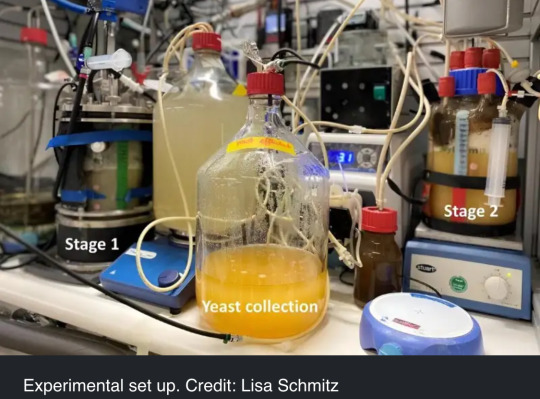
“The team designed a two-stage bioreactor system that produces yeast rich in protein and vitamin B9. [… The protein] levels in their yeast exceed those of beef, pork, fish, and lentils. […] Running on clean energy and CO2, the system reduces carbon emissions in food production. It uncouples land use from farming, freeing up space for conservation[… and] will help farmers concentrate on producing vegetables and crops sustainably.”
3. JCPenney Launches Apparel Collection Aimed At Wheelchair Users

“A major department store is rolling out a new line of clothing specifically tailored to meet the needs of women who use wheelchairs featuring options for both everyday wear and special occasions. [… The clothing have] modifications like zippers located for easy access, pocket positioning and extended back rises optimized for the seated position and shorter sleeves to limit interference with wheels.”
4. Snails bred in Edinburgh Zoo sent to re-populate species in French Polynesia

“Thousands of rare partula snails bred at Edinburgh Zoo are to be released in French Polynesia to restore the wild population of the species.The last surviving few of the species were rescued in the early 1990s[….] 15 species and sub-species [are being bred in zoos for repopulation], the majority of which are classed as extinct in the wild.”
5. [NH Joins 19 Other States] to Provide Essential Behavioral Health Services Through Mobile Crisis Intervention Teams
“[CMS] approved New Hampshire’s Medicaid State Plan Amendment for community-based mobile crisis intervention teams to provide services for people experiencing a mental health or substance use disorder crisis. […] The multidisciplinary team provides screening and assessment; stabilization and de-escalation; and coordination with and referrals to health, social, and other services, as needed.”
6. Recovery plan for Missouri population of eastern hellbender
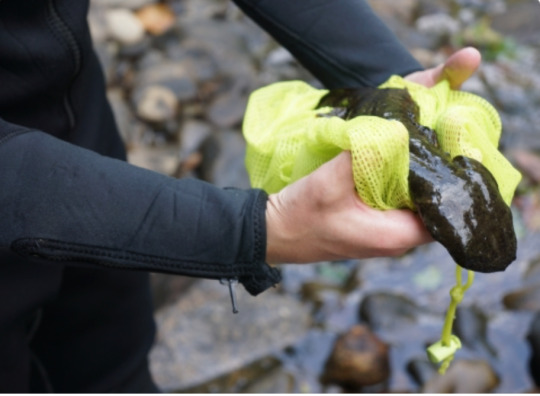
“It is expected that recovery efforts for the Missouri DPS of the eastern hellbender will reduce sedimentation and improve water quality in the aforementioned watersheds, which will also improve drinking water, as well as benefit multiple federally listed mussels, sport fish and other aquatic species.”
7. How $7.3B will help rural co-ops build clean power—and close coal plants
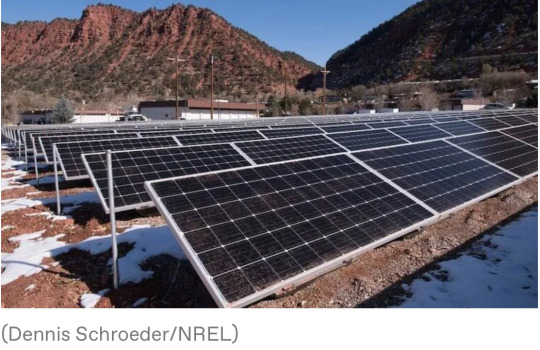
“[The funds are] serving about 5 million households across 23 states [… to] build wind and solar power, which is now cheaper than coal-fired power across most of the country. […] Some of it will be used to pay down the cost of closing coal plants[….] federal funding could help co-ops secure enough wind, solar, and battery resources to retire their entire coal capacity by 2032, cutting carbon emissions by 80 to 90 percent and reducing wholesale electricity costs by 10 to 20 percent[….]”
8. Native-led suicide prevention program focuses on building community strengths

“[Indigenous researchers have] designed programs that aim to build up a community’s endemic strengths, rather than solely treating the risks facing individuals within that community. By providing support and resources that enable access to Alaska Native cultural activities, they hope to strengthen social bonds that build resilience. […] “In a Yup’ik worldview, suicide is not a mental health disorder, and it’s not an individual affliction, it’s a disruption of the collective.””
9. Another rare Javan rhino calf spotted at Indonesia park

“A new Javan rhino calf has been spotted in an Indonesian national park, the facility's head said Friday, further boosting hopes for one of the world's most endangered mammals after two other […] calves were spotted earlier this year at the park, which is the only habitat left for the critically endangered animal.”
10. Transparent solar cells can directly supply energy from glass surfaces
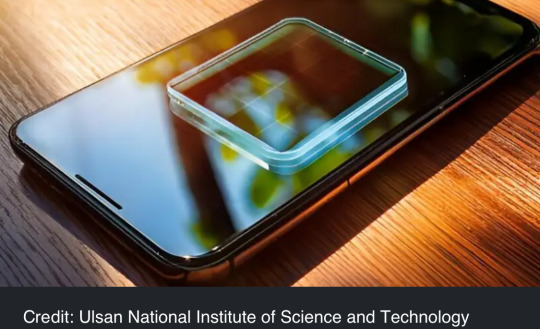
“[Researchers have] unveiled a method of supplying energy directly from glass of buildings, cars, and mobile devices through transparent solar cells. […] It has also succeeded in charging a smartphone using natural sunlight. It also proved the possibility that a screen of a small mobile device can be used as an energy source.”
September 1-7 news here | (all credit for images and written material can be found at the source linked; I don’t claim credit for anything but curating.)
#hopepunk#good news#nature#tiger#endangered species#sustainability#animals#nutrition#jc penney#wheelchair user#adaptive clothing#fashion#snail#edinburgh#scotland#french polynesia#mental health#new hampshire news#missouri#hellbenders#salamander#wind energy#solar power#clean energy#native#community#rhino#technology#baby animals#solar panels
507 notes
·
View notes
Text
so wait
the green energy parts of the Inflation Reduction Act have brought tons of jobs and money to mostly Republican districts?
and as a result, Republicans will pressure Trump not to gut those aspects of the law?
I am. cackling.
(I mean the man's a loose cannon, so god knows if he'll actually listen. but climate is my biggest worry with this administration, so this gives me a sliver of hope)
(that and him having made Mr. Electric Car Magnate his crony, so he's had to walk back negative statements about those, too)
#us politics#current events#shocker: green energy projects actually make economic sense too!#people want them and they bring jobs to places that coal and oil never could!#because you don't have to have fossil fuels present in the ground to make EVs or solar panels#or put up wind turbines#or whatever#WHO would have GUESSED?!?!?!
319 notes
·
View notes
Text
Independent Power Producers (IPPs) are driving the shift to clean energy by developing renewable power plants, investing in solar and wind energy, and expanding energy infrastructure. Learn how IPPs are shaping a sustainable future!
#independent power producers#renewable energy#solar and wind energy#IPPs#renewable power plants#investment in renewable energy#independent power producer company
0 notes
Text

There's a path you take and a path untaken. The choice is up to you my friend.
#morning#good morning#good morning message#good morning image#good morning man#the good morning man#the entire morning#gif#gm#morning vibes#morning motivation#tgmm#☀️🧙🏼♂️✌🏼#sun#the sun#skull#choice#choose#decide#path#paths#do you want a good morning or not?#want#green energy#solar power#solar panels#solar energy#windmill#wind energy#wind power
151 notes
·
View notes
Text
Transforming Projects with Advanced Engineering Design and Consulting Services
Introduction
In the realm of engineering and construction, detailed and precise design is critical for success. At JJ Innovative, based in Pune, Maharashtra, we provide top-tier engineering design and consulting services tailored to meet the diverse needs of our clients across India. Our comprehensive approach integrates civil and structural engineering, MEP consulting, and advanced 3D modeling services to deliver exceptional results.
Detailed Engineering: Precision and Accuracy
Detailed engineering is an essential phase in the engineering design process. It involves creating thorough and precise designs that guide the construction and implementation of projects. At JJ Innovative, we excel in detailed engineering, offering services that encompass every aspect of your project. Our detailed engineering solutions ensure that all components of your project are meticulously planned and executed.
Our team of experts works closely with clients to understand their specific needs and deliver designs that adhere to industry standards. We provide detailed engineering services for various sectors, including commercial, residential, and industrial projects. Our focus on accuracy and precision helps minimize errors and optimize project outcomes.
MEP Consultants: Comprehensive Building Systems Design
Mechanical, Electrical, and Plumbing (MEP) systems are crucial for the functionality and efficiency of any building. As leading MEP consultants in Pune, JJ Innovative offers specialized services to design and integrate these systems seamlessly into your projects. Our MEP consultancy services cover a wide range of applications, from residential buildings to large-scale industrial facilities.
We provide comprehensive MEP design solutions, including HVAC systems, electrical layouts, and plumbing installations. Our team ensures that all MEP systems are designed to meet regulatory requirements and operate efficiently. By incorporating modern technologies and sustainable practices, we help clients achieve energy efficiency and cost savings.
Civil and Structural Engineering: Building Strong Foundations
Civil and structural engineering is the backbone of any construction project. At JJ Innovative, we offer expert civil and structural engineering services to ensure that your projects are built on a solid foundation. Our team of civil and structural engineers provides comprehensive design and consulting services that address all aspects of structural integrity and safety.
We work on a variety of projects, including residential buildings, commercial spaces, and infrastructure developments. Our civil and structural engineering services include site analysis, structural design, and construction supervision. By leveraging advanced engineering techniques and technologies, we deliver robust and reliable solutions that stand the test of time.
3D Design and Modeling Services: Bringing Ideas to Life
3D design and modeling have revolutionized the way projects are visualized and executed. JJ Innovative offers state-of-the-art 3D design services that bring your concepts to life with unparalleled clarity and detail. Our 3D modeling services are essential for accurate planning, design verification, and stakeholder communication.
Our team uses advanced 3D modeling software to create detailed and realistic representations of your projects. Whether you need 3D models for architectural design, civil engineering, or plant design, we provide solutions that enhance project planning and execution. Our 3D design services also facilitate better decision-making and reduce the risk of design errors.
Plant Design Engineering Services: Optimizing Industrial Facilities
Plant design engineering is critical for the successful operation of industrial facilities. At JJ Innovative, we offer specialized plant design engineering services that cater to various industries, including chemical plants and manufacturing facilities. Our plant design solutions encompass detailed engineering, 3D modeling, and system integration.
We provide comprehensive plant design services, including layout planning, equipment selection, and process optimization. Our team ensures that all plant design aspects are aligned with industry standards and client requirements. By incorporating innovative technologies and sustainable practices, we help clients achieve efficient and cost-effective plant operations.
Solar and Wind Energy Solutions: Embracing Sustainable Practices
Sustainable energy solutions are becoming increasingly important in today’s world. JJ Innovative is at the forefront of providing solar and wind energy solutions that promote green power and environmental sustainability. Our team of experts offers consulting and design services for integrating renewable energy sources into your projects.
We provide comprehensive solar and wind energy solutions, including system design, installation, and maintenance. Our services are tailored to meet the specific needs of residential, commercial, and industrial clients. By leveraging the latest technologies and best practices, we help clients harness the power of renewable energy and reduce their carbon footprint.
Conclusion
JJ Innovative is your go-to partner for advanced engineering design and consulting services in Pune, Maharashtra, and across India. With expertise in detailed engineering, MEP consulting, civil and structural engineering, 3D modeling, and plant design, we deliver exceptional results for a wide range of projects. Contact us today to learn more about our services and how we can help you achieve your project goals.
#"engg consultat in Pune#Maharatshta#India#design and consulting services#detailed engineering#mep consultants#civil and structural engineering#3d model services#plant design engineering services#engineering design consultants#solar and wind energy#chemical plant engineering#mep consultants near me#civil structural engineering design services#3d design services#plant engineering solutions#basic and detail engineering#fire engineering consultant#engineering project management consultancy#construction consultant company#project management companies#green power solar#plant design engineering solutions#management consulting companies#project management consultancy services for construction#3d modeling services near me#mep design consultants#mep consultancy services
0 notes
Text
Clean energy is driving a U.S. manufacturing renaissance: 42 new facilities are online & operating & 119 are under development across America. These domestic manufacturing facilities are spurring the creation of 100,000 good-paying American jobs.

#Renewable energy#solar energy#wind energy#hydroelectricity#bioenergy#geothermal energy#clean technology#energy efficiency#carbon neutrality#sustainable development
90 notes
·
View notes
Text
There was record-breaking clean energy progress all around the world in 2024
"Last week, we shared the news that the U.S. government permanently closed most federal waters — more than 625 million acres — to offshore oil and gas drilling.
It’s a great way to kick off a year of more good climate action. And as the year-end data rolls in, there are even more stories of progress in fighting climate change via transitioning away from fossil fuels toward clean energy sources across the globe. In 2024...
📍 In Great Britain, wind power alone provided more electricity than ever before, and all renewables together generated around 56% of electricity.
📍 In Germany, renewables made up a record 59% of electricity generation and became the “backbone of the system” in the country.
📍 In Poland, a record 29% of its power came from renewable sources, showing great progress in a country that still heavily relies on coal.
📍 In India, the “transformative growth” of its renewable energy sector led to it surpassing 200 GW of installed capacity, making up 46% of the country’s total installed capacity.
→ Read more stories of progress for the planet"
-via GoodGoodGood, January 18, 2025, Source
#environment#climate#climate news#climate change#climate action#renewables#renewable energy#solar power#green energy#wind power#uk#united kingdom#germany#poland#india#europe#asia#good news#hope#hope posting
2K notes
·
View notes
Text
Real innovation vs Silicon Valley nonsense

This is the LAST DAY to get my bestselling solarpunk utopian novel THE LOST CAUSE (2023) as a $2.99, DRM-free ebook!

If there was any area where we needed a lot of "innovation," it's in climate tech. We've already blown through numerous points-of-no-return for a habitable Earth, and the pace is accelerating.
Silicon Valley claims to be the epicenter of American innovation, but what passes for innovation in Silicon Valley is some combination of nonsense, climate-wrecking tech, and climate-wrecking nonsense tech. Forget Jeff Hammerbacher's lament about "the best minds of my generation thinking about how to make people click ads." Today's best-paid, best-trained technologists are enlisted to making boobytrapped IoT gadgets:
https://pluralistic.net/2024/05/24/record-scratch/#autoenshittification
Planet-destroying cryptocurrency scams:
https://pluralistic.net/2024/02/15/your-new-first-name/#that-dagger-tho
NFT frauds:
https://pluralistic.net/2022/02/06/crypto-copyright-%f0%9f%a4%a1%f0%9f%92%a9/
Or planet-destroying AI frauds:
https://pluralistic.net/2024/01/29/pay-no-attention/#to-the-little-man-behind-the-curtain
If that was the best "innovation" the human race had to offer, we'd be fucking doomed.
But – as Ryan Cooper writes for The American Prospect – there's a far more dynamic, consequential, useful and exciting innovation revolution underway, thanks to muscular public spending on climate tech:
https://prospect.org/environment/2024-05-30-green-energy-revolution-real-innovation/
The green energy revolution – funded by the Bipartisan Infrastructure Act, the Inflation Reduction Act, the CHIPS Act and the Science Act – is accomplishing amazing feats, which are barely registering amid the clamor of AI nonsense and other hype. I did an interview a while ago about my climate novel The Lost Cause and the interviewer wanted to know what role AI would play in resolving the climate emergency. I was momentarily speechless, then I said, "Well, I guess maybe all the energy used to train and operate models could make it much worse? What role do you think it could play?" The interviewer had no answer.
Here's brief tour of the revolution:
2023 saw 32GW of new solar energy come online in the USA (up 50% from 2022);
Wind increased from 118GW to 141GW;
Grid-scale batteries doubled in 2023 and will double again in 2024;
EV sales increased from 20,000 to 90,000/month.
https://www.whitehouse.gov/briefing-room/blog/2023/12/19/building-a-thriving-clean-energy-economy-in-2023-and-beyond/
The cost of clean energy is plummeting, and that's triggering other areas of innovation, like using "hot rocks" to replace fossil fuel heat (25% of overall US energy consumption):
https://rondo.com/products
Increasing our access to cheap, clean energy will require a lot of materials, and material production is very carbon intensive. Luckily, the existing supply of cheap, clean energy is fueling "green steel" production experiments:
https://www.wdam.com/2024/03/25/americas-1st-green-steel-plant-coming-perry-county-1b-federal-investment/
Cheap, clean energy also makes it possible to recover valuable minerals from aluminum production tailings, a process that doubles as site-remediation:
https://interestingengineering.com/innovation/toxic-red-mud-co2-free-iron
And while all this electrification is going to require grid upgrades, there's lots we can do with our existing grid, like power-line automation that increases capacity by 40%:
https://www.npr.org/2023/08/13/1187620367/power-grid-enhancing-technologies-climate-change
It's also going to require a lot of storage, which is why it's so exciting that we're figuring out how to turn decommissioned mines into giant batteries. During the day, excess renewable energy is channeled into raising rock-laden platforms to the top of the mine-shafts, and at night, these unspool, releasing energy that's fed into the high-availability power-lines that are already present at every mine-site:
https://www.euronews.com/green/2024/02/06/this-disused-mine-in-finland-is-being-turned-into-a-gravity-battery-to-store-renewable-ene
Why are we paying so much attention to Silicon Valley pump-and-dumps and ignoring all this incredible, potentially planet-saving, real innovation? Cooper cites a plausible explanation from the Apperceptive newsletter:
https://buttondown.email/apperceptive/archive/destructive-investing-and-the-siren-song-of/
Silicon Valley is the land of low-capital, low-labor growth. Software development requires fewer people than infrastructure and hard goods manufacturing, both to get started and to run as an ongoing operation. Silicon Valley is the place where you get rich without creating jobs. It's run by investors who hate the idea of paying people. That's why AI is so exciting for Silicon Valley types: it lets them fantasize about making humans obsolete. A company without employees is a company without labor issues, without messy co-determination fights, without any moral consideration for others. It's the natural progression for an industry that started by misclassifying the workers in its buildings as "contractors," and then graduated to pretending that millions of workers were actually "independent small businesses."
It's also the natural next step for an industry that hates workers so much that it will pretend that their work is being done by robots, and then outsource the labor itself to distant Indian call-centers (no wonder Indian techies joke that "AI" stands for "absent Indians"):
https://pluralistic.net/2024/05/17/fake-it-until-you-dont-make-it/#twenty-one-seconds
Contrast this with climate tech: this is a profoundly physical kind of technology. It is labor intensive. It is skilled. The workers who perform it have power, both because they are so far from their employers' direct oversight and because these fed-funded sectors are more likely to be unionized than Silicon Valley shops. Moreover, climate tech is capital intensive. All of those workers are out there moving stuff around: solar panels, wires, batteries.
Climate tech is infrastructural. As Deb Chachra writes in her must-read 2023 book How Infrastructure Works, infrastructure is a gift we give to our descendants. Infrastructure projects rarely pay for themselves during the lives of the people who decide to build them:
https://pluralistic.net/2023/10/17/care-work/#charismatic-megaprojects
Climate tech also produces gigantic, diffused, uncapturable benefits. The "social cost of carbon" is a measure that seeks to capture how much we all pay as polluters despoil our shared world. It includes the direct health impacts of burning fossil fuels, and the indirect costs of wildfires and extreme weather events. The "social savings" of climate tech are massive:
https://arstechnica.com/science/2024/05/climate-and-health-benefits-of-wind-and-solar-dwarf-all-subsidies/
For every MWh of renewable power produced, we save $100 in social carbon costs. That's $100 worth of people not sickening and dying from pollution, $100 worth of homes and habitats not burning down or disappearing under floodwaters. All told, US renewables have delivered $250,000,000,000 (one quarter of one trillion dollars) in social carbon savings over the past four years:
https://arstechnica.com/science/2024/05/climate-and-health-benefits-of-wind-and-solar-dwarf-all-subsidies/
In other words, climate tech is unselfish tech. It's a gift to the future and to the broad public. It shares its spoils with workers. It requires public action. By contrast, Silicon Valley is greedy tech that is relentlessly focused on the shortest-term returns that can be extracted with the least share going to labor. It also requires massive public investment, but it also totally committed to giving as little back to the public as is possible.
No wonder America's richest and most powerful people are lining up to endorse and fund Trump:
https://prospect.org/blogs-and-newsletters/tap/2024-05-30-democracy-deshmocracy-mega-financiers-flocking-to-trump/
Silicon Valley epitomizes Stafford Beer's motto that "the purpose of a system is what it does." If Silicon Valley produces nothing but planet-wrecking nonsense, grifty scams, and planet-wrecking, nonsensical scams, then these are all features of the tech sector, not bugs.
As Anil Dash writes:
Driving change requires us to make the machine want something else. If the purpose of a system is what it does, and we don’t like what it does, then we have to change the system.
https://www.anildash.com/2024/05/29/systems-the-purpose-of-a-system/
To give climate tech the attention, excitement, and political will it deserves, we need to recalibrate our understanding of the world. We need to have object permanence. We need to remember just how few people were actually using cryptocurrency during the bubble and apply that understanding to AI hype. Only 2% of Britons surveyed in a recent study use AI tools:
https://www.bbc.com/news/articles/c511x4g7x7jo
If we want our tech companies to do good, we have to understand that their ground state is to create planet-wrecking nonsense, grifty scams, and planet-wrecking, nonsensical scams. We need to make these companies small enough to fail, small enough to jail, and small enough to care:
https://pluralistic.net/2024/04/04/teach-me-how-to-shruggie/#kagi
We need to hold companies responsible, and we need to change the microeconomics of the board room, to make it easier for tech workers who want to do good to shout down the scammers, nonsense-peddlers and grifters:
https://pluralistic.net/2023/07/28/microincentives-and-enshittification/
Yesterday, a federal judge ruled that the FTC could hold Amazon executives personally liable for the decision to trick people into signing up for Prime, and for making the unsubscribe-from-Prime process into a Kafka-as-a-service nightmare:
https://arstechnica.com/tech-policy/2024/05/amazon-execs-may-be-personally-liable-for-tricking-users-into-prime-sign-ups/
Imagine how powerful a precedent this could set. The Amazon employees who vociferously objected to their bosses' decision to make Prime as confusing as possible could have raised the objection that doing this could end up personally costing those bosses millions of dollars in fines:
https://pluralistic.net/2023/09/03/big-tech-cant-stop-telling-on-itself/
We need to make climate tech, not Big Tech, the center of our scrutiny and will. The climate emergency is so terrifying as to be nearly unponderable. Science fiction writers are increasingly being called upon to try to frame this incomprehensible risk in human terms. SF writer (and biologist) Peter Watts's conversation with evolutionary biologist Dan Brooks is an eye-opener:
https://thereader.mitpress.mit.edu/the-collapse-is-coming-will-humanity-adapt/
They draw a distinction between "sustainability" meaning "what kind of technological fixes can we come up with that will allow us to continue to do business as usual without paying a penalty for it?" and sustainability meaning, "what changes in behavior will allow us to save ourselves with the technology that is possible?"
Writing about the Watts/Brooks dialog for Naked Capitalism, Yves Smith invokes William Gibson's The Peripheral:
With everything stumbling deeper into a ditch of shit, history itself become a slaughterhouse, science had started popping. Not all at once, no one big heroic thing, but there were cleaner, cheaper energy sources, more effective ways to get carbon out of the air, new drugs that did what antibiotics had done before…. Ways to print food that required much less in the way of actual food to begin with. So everything, however deeply fucked in general, was lit increasingly by the new, by things that made people blink and sit up, but then the rest of it would just go on, deeper into the ditch. A progress accompanied by constant violence, he said, by sufferings unimaginable.
https://www.nakedcapitalism.com/2024/05/preparing-for-collapse-why-the-focus-on-climate-energy-sustainability-is-destructive.html
Gibson doesn't think this is likely, mind, and even if it's attainable, it will come amidst "unimaginable suffering."
But the universe of possible technologies is quite large. As Chachra points out in How Infrastructure Works, we could give every person on Earth a Canadian's energy budget (like an American's, but colder), by capturing a mere 0.4% of the solar radiation that reaches the Earth's surface every day. Doing this will require heroic amounts of material and labor, especially if we're going to do it without destroying the planet through material extraction and manufacturing.
These are the questions that we should be concerning ourselves with: what behavioral changes will allow us to realize cheap, abundant, green energy? What "innovations" will our society need to focus on the things we need, rather than the scams and nonsense that creates Silicon Valley fortunes?
How can we use planning, and solidarity, and codetermination to usher in the kind of tech that makes it possible for us to get through the climate bottleneck with as little death and destruction as possible? How can we use enforcement, discernment, and labor rights to thwart the enshittificatory impulses of Silicon Valley's biggest assholes?

If you'd like an essay-formatted version of this post to read or share, here's a link to it on pluralistic.net, my surveillance-free, ad-free, tracker-free blog:
https://pluralistic.net/2024/05/30/posiwid/#social-cost-of-carbon
#pluralistic#ai#hype#anil dash#stafford beer#amazon#prime#scams#dark patterns#POSIWID#the purpose of a system is what it does#climate#economics#innovation#renewables#social cost of carbon#green energy#solar#wind#ryan cooper#peter watts#the jackpot#ai hype#chips act#ira#inflation reduction act#infrastructure#deb chachra
157 notes
·
View notes